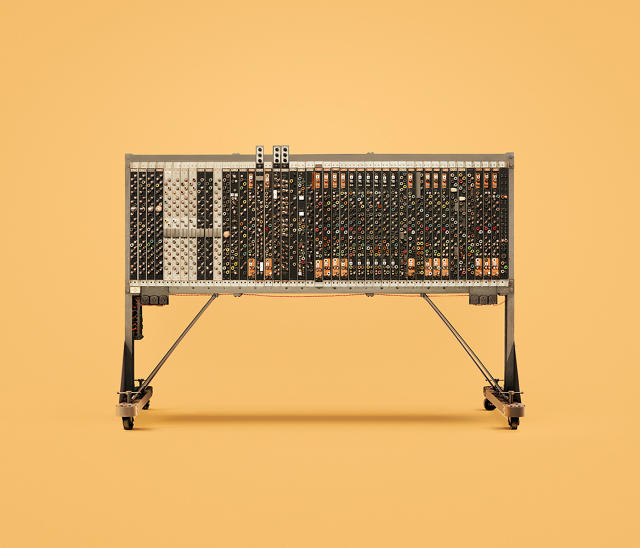To hear some people talk, computers were never even remotely sexy until Apple released the first Mac. That's a lie. Computers have always been sexy, as these pin-up photographs of vintage computer mainframes from U.K. photographer James Ball show. They just have a more brutal beauty: broad and buxom mainframe fatales, compared to today's silicon sylphs.
The computers in Ball's Guide To Computing series all come from computer museums around the world, including the National Museum of Computing at Bletchley Park, the central site for Britain's codebreakers during World War II. Appropriately, then, one of the earliest machines featured in the series is the Pilot Ace, designed in the early 1950s by Alan Turing.
Other machines include the EAI Pace (the absurdly screen-less "desktop computer" manufactured in the early '60s that looks straight out of Mad Men), the Harwell Dekatron (an early British relay-based computer which looks like a Rube Goldberg-esque contraption of random knobs, dials, and soup cans), and the CDC 6600, which was the world's fastest computer from 1964 to 1969: a blistering three megaflops, about 170 times slower than the processor inside an Apple Watch today.

Ball tells me his inspiration for shooting classic computers and mainframes was his affinity for the analog. "I've always had great affection for knobs, dials, and switches," he says. "I was looking for ways to express this and happened to start looking through eBay for old oscilloscopes and computer parts. I was going to actually build something until I realized that my analogue-fantasies actually existed, in the real life computing designs from yesteryear."
Unfortunately, many of the computers that Ball photographed were not kept in great condition. So after shooting the series, Ball teamed up with a digital retouching team at INK to make these vintage beauties look young and toothsome again. Ball thought this was important, because without digitally retouching his photographs, early computer design trends could easily be lost: for example, the explosion of colorful mainframes in the swinging '60s.
What was interesting about this process, Ball says, is that many of the machines are so old, there's just no color photographs available of what they originally looked like, before they became faded over time. In a way, Ball says, "the retouching has provided a kind of meta-twist in that they present [these machines] in a never before seen history and context."
All Images: via Behance